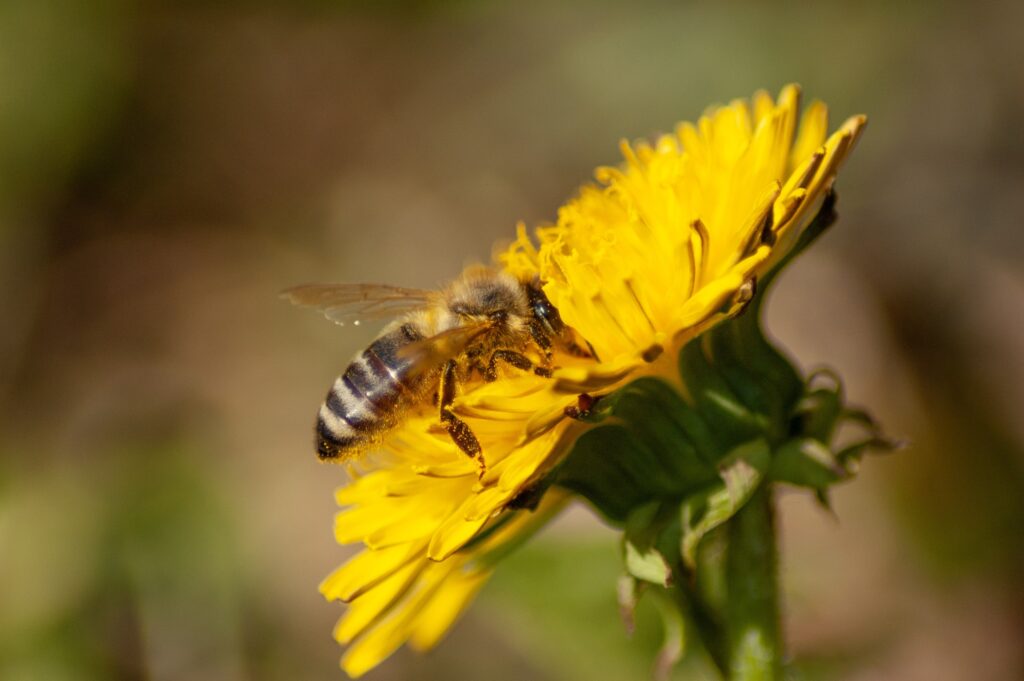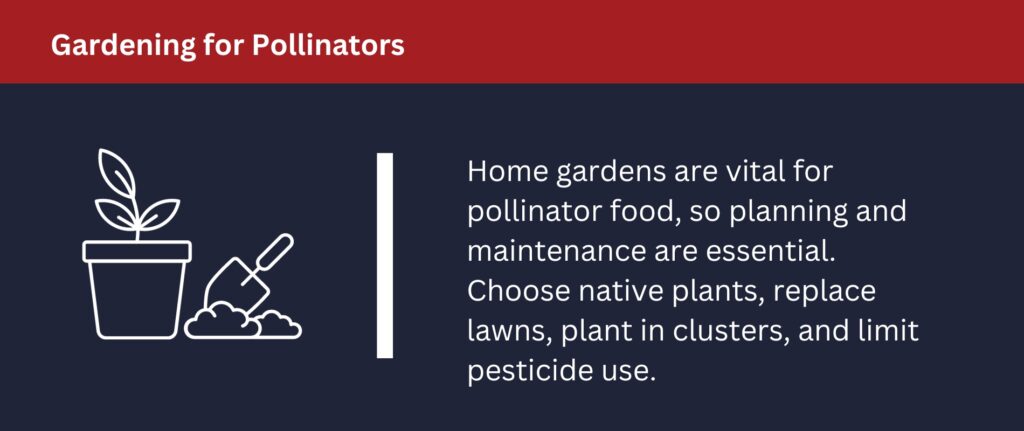
Pollinators are animals that carry pollen from flower to flower, which enables the plant to produce fruits and seeds. The most common pollinators are insects such as bees, butterflies, wasps, ants, and beetles. However, birds, bats, and moths do also pollinate.
How Does Pollination Work?
Plants produce nectar and pollen and have also evolved features such as colors, scents, shapes, structures, and bloom times, which attract specific pollinators. When these pollinators visit the plant, they feed on the nectar and pollen, which gets stuck on their bodies and legs. They then feed on the nectar and pollen from the female organs of the same plant or another plant of the same species, which transfers the pollen from the previous plant they visited. This transferring of pollen leads to fertilization and successful seed and fruit production by the plants.
Why Is Pollination Important?

Animal pollinators are critically important because 75% of all flowering plants rely on being pollinated by insects or a different pollinator animal. Many agricultural crops rely on them and would be fruitless if pollinators did not visit them. Furthermore, without pollinators, many native flowers, trees, and shrubs would be bare of seeds and berries, which would leave wildlife struggling for food sources. Researchers estimate that one in every three bites of food we eat exists because of pollinators, and in the United States, pollination by bees and other insects produces $40 billion worth of products annually. Michigan State University did a research experiment and planted native wildflowers around blueberry crops in an attempt to attract native pollinators, and they saw the wild bee population double within two years, and blueberry yields increase up to 20%. Even tomatoes, which don’t actually rely on pollinators due to self-pollination, can get up to a 50% increase in yield and bigger in size when they get regular visits from pollinators.
- The Power of Pollinators
- What is the Role of Native Bees in the United States?
- The Importance of Pollinators
Declining Pollinators
Over the world, there is evidence that pollinators have suffered from a loss of flowers that provide pollen and nectar, declining habitat, invasive plants, pesticide exposure, and disease. In the United States, many pollinators are federally listed species as a result of evidence of their continuing disappearance in natural areas. Landscapes with no flowers, like heavily mowed lawns or heavily built-up cities and towns with low plant diversity, contain little food for pollinators, which leads to declining populations. Furthermore, poor nutrition compromises pollinator immune systems, which makes them more susceptible to pesticides and disease. Bees are the most affected pollinator. Beginning in 2006, experts noted significant yearly declines in honey bee colonies, and since then, U.S. beekeepers have lost at least 30% of their colonies every year.
- Major Threats to Pollinators
- Pesticides and Pollinators
- Factors that threaten pollinator health
- United States Honey Bee Colony Losses 2020-2021
Gardening for Pollinators

Home gardens can provide up to as much as 85% of the food for pollinators, which means that the way we build and maintain our gardens is an important way to strengthen pollinator populations. When you are planning your garden, think about the preferences of the pollinators and choose native plants that have a variety of shapes, colors, scents, and bloom times. Having large lawn areas is not the best habitat for pollinators, so consider replacing some lawn areas with plants and shrubs for visiting pollinators. You could even consider having some areas with wildflowers and weeds because pollinators particularly love these. Research suggests that planting native plants is good for pollinators because, over time, these native plants have evolved to carry their pollen in a way that maximizes their chance of reproduction and to have a mutually beneficial relationship with native wildlife. Because native plants are adapted to your weather and soil conditions, they can make lower maintenance additions to your garden than non-native plants. When placing the plants in your garden, plant them in clusters so that pollinators can spot them easier and have a simpler journey from flower to flower. Some plants emerge nearer to the start of spring, while others don’t appear until the mid-summer. To maximize the effectiveness of your pollinator garden, have a variety of plants with different bloom times so that there is always a plant available in your garden to provide nutrition to your pollinators. Pesticides are commonly used to target pests, diseases, and weeds. However, their use in the garden should be limited because while they target pests, they are also damaging to pollinators and contributes to pollinator mortality.
- Growing Plants to Help Bees and Other Pollinators
- How to Build a Pollinator Garden
- Gardening With Pollinators in Mind
- Attracting Butterflies
- 5 of the Most Bee-Friendly Flowers To Plant in Your Garden
- Create Monarch Butterfly and Pollinator Habitat by Planting Milkweed and Nectar Plants
- How to Control Invasive Pests While Protecting Pollinators and Other Beneficial Insects
- Pollinator Search
- Give Bees a Chance
- Pollinator Partners: Hummingbirds

